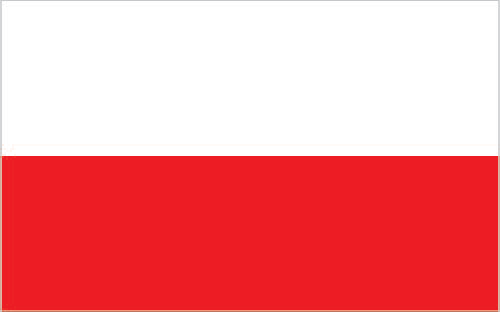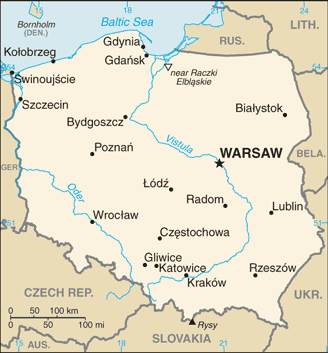Importing from Poland


Poland Country Profile
Official Name (Local Language) Rzeczpospolita Polska
Capital Warsaw
Population 38,523,261
Currency Polish Zloty
GDP $467.4 billion
Languages Polish
Phone Dial In 48
Poland Exports Profile
Exports ($m USD) 221,308
Number of Export Products 4,389
Number of Export Partners 224

Poland Economic Statistics
Government Website | https://www.premier.gov.pl/en.html |
| Sovereign Ratings | https://countryeconomy.com/ratings/poland |
| Central Bank | National Bank of Poland |
| Currency USD Exchange Rate | 4.056 |
| Unemployment Rate | 9.6% |
| Population below poverty line | 17.6% |
| Inflation Rate | -0.8% |
| Prime Lending Rate | 1.5% |
| GDP | $467.4 billion |
| GDP Pro Capita (PPP) | $27,700 |
| Currency Name | Polish Zloty |
| Currency Code | PLN |
| World Bank Classification | High Income |
| Competitive Industrial Performance | 36/138 |
| Corruption Perceptions Index | 36/180 |
| Ease of Doing Business | 33/190 |
| Enabling Trade Index | 31/136 |
Access trade, receivables and supply chain finance
We assist companies to access trade and receivables finance through our relationships with 270+ banks, funds and alternative finance houses.
Get StartedImporting from Poland
Poland is now a member of the EU and in May 2004, they were conducting trade using the Central European Free Trade Agreement (CEFTA) and this included Slovakia, Hungary, the Czech Republic and Slovenia. Poland is the twenty-sixth largest export economy in the world and the twenty-first most complex economy according to the Economic Complexity Index (ECI). On average, Poland exports a yearly amount of $190B and imports around $200B, which results in a negative trade balance of around $10B. GDP of Poland was around $520B and its GDP per capita was around $23k. The main trading partner is its neighbour, Germany.
Importing from Poland: What is trade finance?
Poland has emerged as a dynamic market over the past 25 years and has become a major actor within Europe, being the sixth-largest economy in the EU. The Polish economy performed well during the 2014-17 period, with the real GDP growth rate generally exceeding 3%. In 2017, Poland’s economy expanded 4.6% (OECD), its fastest pace since 2011 and above IMF estimates. Growth was led by domestic demand and government social spending. In fact, household consumption expenditure – which accounts for 61% of GDP – recorded its strongest growth in nearly a decade (4.7%). A stronger and more dynamic activity in Poland’s neighbours and in the EU have also supported such growth. The World Bank expects Poland’s economy to grow by 4% in 2018, followed by 3.5% in 2019.
Chart Showing GDP Growth Compared to rest of world
GDP Composition for Poland
Agriculture
2.7%
Potatoes, fruits, vegetables, wheat; poultry, eggs, pork, dairy
Industry
38.5%
Machine building, iron and steel, coal mining, chemicals, shipbuilding, food processing, glass, beverages, textiles
Services
58.9%
Map
Top 5 Exports Partners
| Country | Trade | % Partner Share |
| Germany | 60,210 | 27.21 |
| United Kingdom | 14,071 | 6.36 |
| Czech Republic | 14,052 | 6.35 |
| France | 12,343 | 5.58 |
| Italy | 10,856 | 4.91 |
Top 5 Exports Products
| Export Product | Number |
| Television receivers including video monitors a | 5.6% |
| Automobiles with reciprocating piston engine di | 3.4% |
| Automatic data processing machines and units th | 2.7% |
| Cigarettes containing tobacco | 2.0% |
| Motor vehicle parts nes | 1.9% |
Local Partners
- All Topics
- Philippines Trade Resources
- Export Finance and ECA Topics
- Local Conferences



















